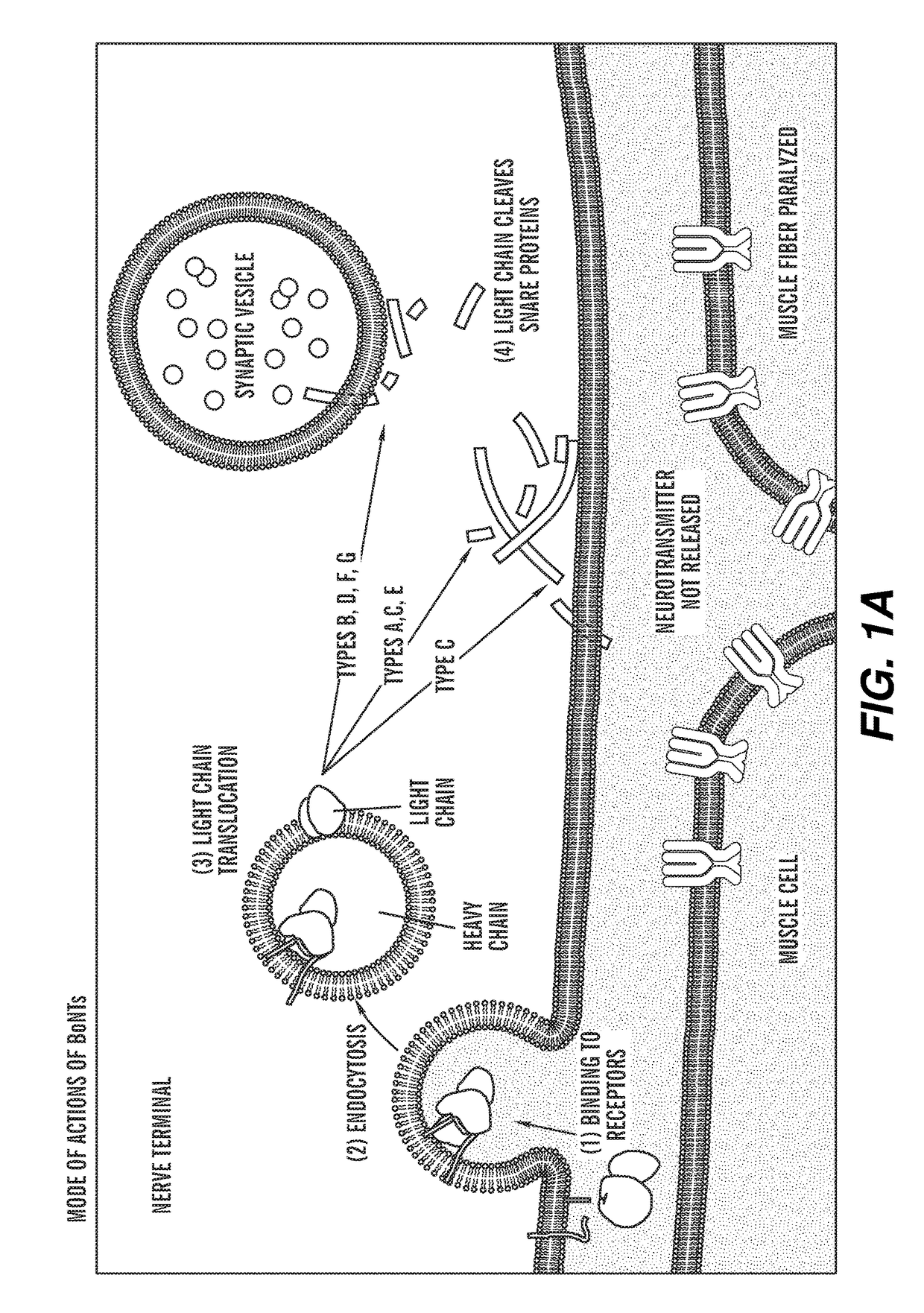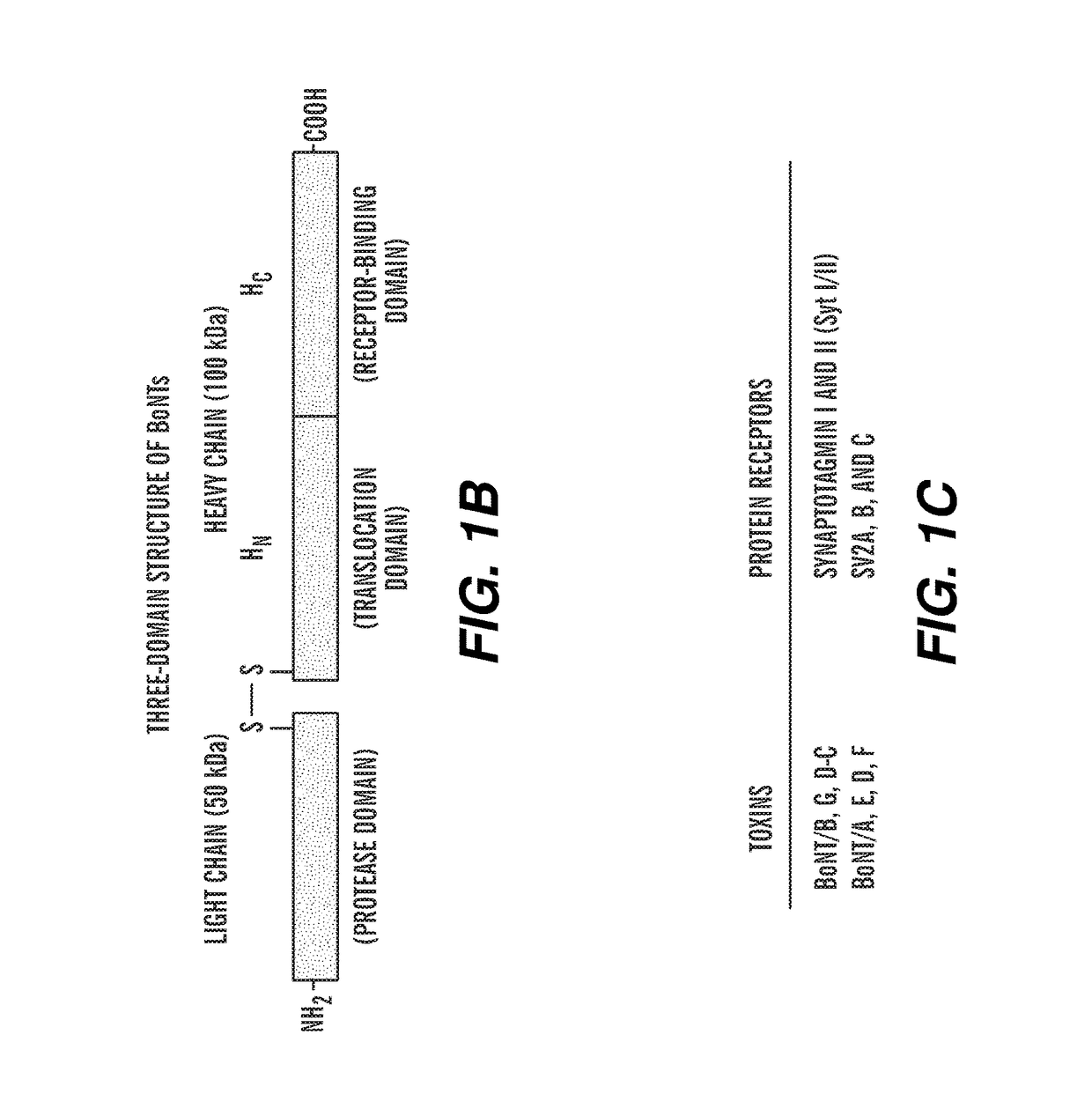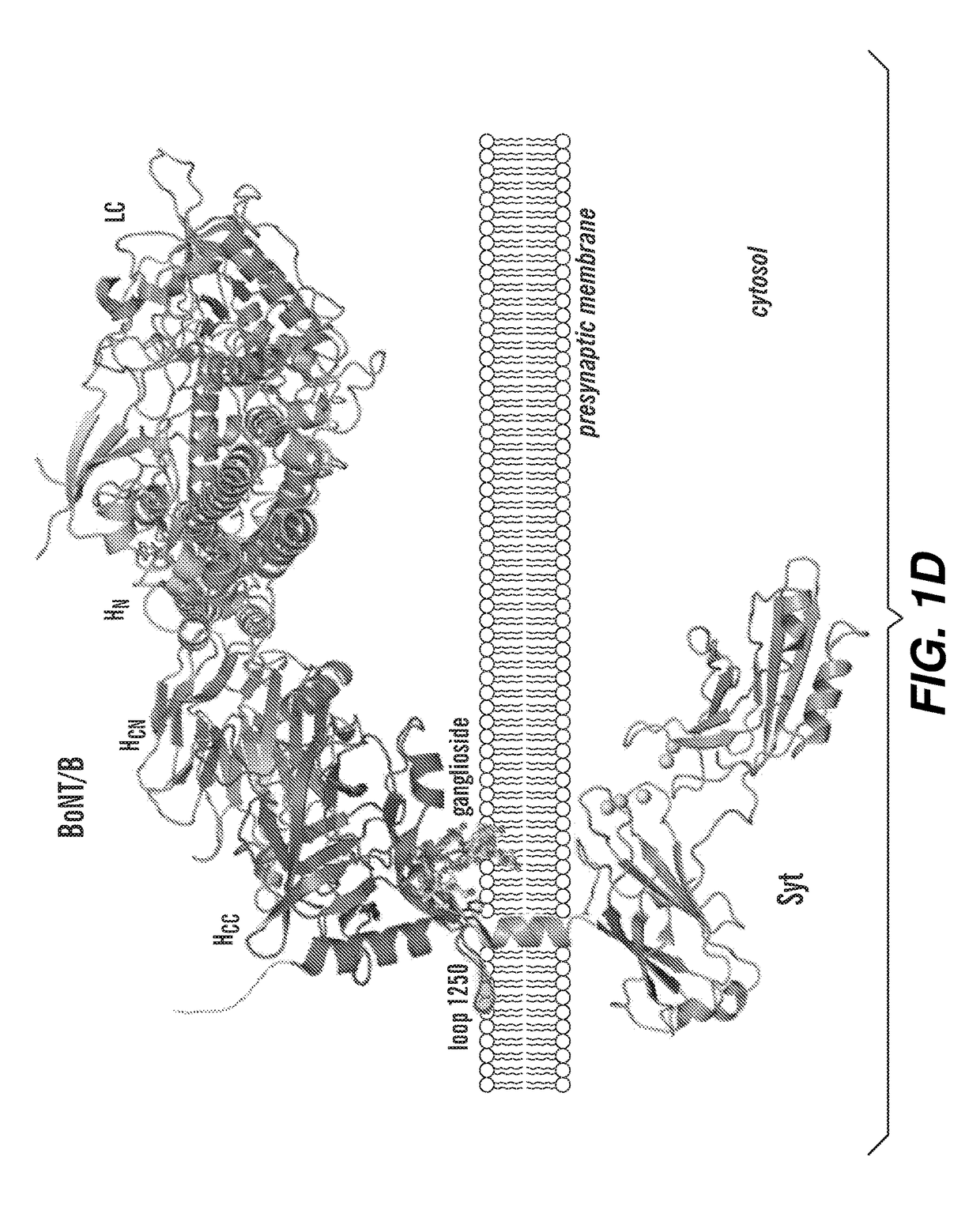Engineered botulinum neurotoxin
a botulinum neurotoxin and neurotoxin technology, applied in the field of neuromuscular disorders, can solve the problems of ineffective future treatment, limitations and adverse effects, paralysis of animals and humans, etc., and achieve the effects of enhancing reducing and enhancing the binding of the modified b-h
- Summary
- Abstract
- Description
- Claims
- Application Information
AI Technical Summary
Benefits of technology
Problems solved by technology
Method used
Image
Examples
embodiments
[0062]The observation that BoNT / B is less specific and potent in humans due to its inability to bind human Syt II, may explain why comparatively higher doses are required than BoNT / A. Higher BoNT / B doses correspond to increased chances for triggering antibody responses and for serious side-effects to occur. Therefore, improved binding of BoNT / B to the human receptor Syt II, to increase its efficacy and specificity to target human neurons should allow a reduced amount of the toxin doses used in therapeutic applications.
[0063]Aspects of the invention arise from the finding that modifying the protein sequence of BoNT / B-HC modifies binding of the fragment containing the receptor binding domain, to the human Syt II receptor. Specific modifications have been identified that enhance binding, thereby generating a domain that binds human Syt II with high-affinity. The modified BoNT / B-HC, when in the context of a full length BoNT protein, retains these binding properties. Incorporation of a m...
examples
[0197]The following experiments were performed to determine if it is possible to change the binding affinity of BoNT / B to human Syt II by modifying the BoNT / B receptor binding domain. The hypothesis is based on a series of previous studies: (1) It has been shown in 1998 that a naturally occurring BoNT / B subtype toxin, BoNT / B2, exhibits ˜4 fold lower binding affinity to Syt II than BoNT / B28 (also defined as BoNT / B1, FIG. 2F). This affinity difference was demonstrated to be due to a few amino acid differences within their receptor binding domains in 200329 (FIG. 2F, G), demonstrating for the first time that changing residues within the receptor binding domain of BoNT / B can change the binding affinity to Syt II. These studies also identified key residues that influence binding affinity to Syt II (FIG. 2G). (2) It has been reported in 2004 that single residue mutations within the receptor binding domain of BoNT / A and BoNT / B can dramatically change the toxicity and potency of these toxin...
PUM
| Property | Measurement | Unit |
|---|---|---|
| size | aaaaa | aaaaa |
| frequency | aaaaa | aaaaa |
| binding affinity | aaaaa | aaaaa |
Abstract
Description
Claims
Application Information
 Login to View More
Login to View More - R&D
- Intellectual Property
- Life Sciences
- Materials
- Tech Scout
- Unparalleled Data Quality
- Higher Quality Content
- 60% Fewer Hallucinations
Browse by: Latest US Patents, China's latest patents, Technical Efficacy Thesaurus, Application Domain, Technology Topic, Popular Technical Reports.
© 2025 PatSnap. All rights reserved.Legal|Privacy policy|Modern Slavery Act Transparency Statement|Sitemap|About US| Contact US: help@patsnap.com



